The Great Fire of London was a huge urban fire that started in the early hours of the morning of Sunday 2nd September 1666, and by Tueday 4th it had destroyed 13,200 houses, 87 churches, and a huge number of civil and ecclesiastical landmarks. The blaze was a major blow to the British economy, and it created a story that is indelible in the British psyche. On the other hand, there were some very odd things going on, says JON KANEKO-JAMES
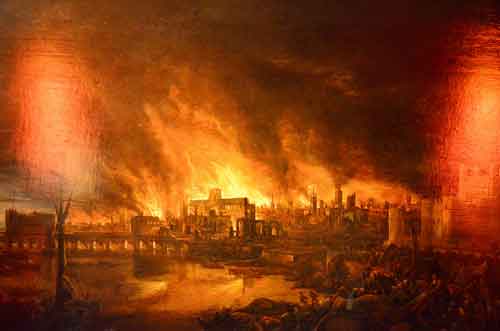
1. It Rained Birds
Imagine this: you’ve got everything you own on a cart, burning hot winds are whipping at your clothing, blowing red hot cinders into your face. Then it starts raining birds. Charred, living birds.
Birds were an important part of London life. They were an important source of food: and keeping a few chickens was a good source of food and possible income for a Londoner. Even a relatively poor family who could keep a small flock of geese or a roost of pigeons would have an advantage when it came to the important task of ‘making shift’, i.e. paying their bills and getting through life. Of all the birds in Restoration London (and modern London, although they’re less welcome now) pigeons were some of the most common.
Unfortunately, the Great Fire of London was a bad place to be a bird. When the fire took hold the heat was unbelievable: historians usually compare the heat to the same order of magnitude as the Dresden Firestorm during the Second World War. This had a terrible effect on the large numbers of feral, domesticated and semi-domesticated birds living in London at the time.
Samuel Pepys, a late 17th Century Diarist who was caught up in fighting the fire, writes: “…the poor pigeons, I perceive, were loth to leave their houses, but hovered about the windows and balconies till they were, some of them burned, their wings, and fell down.”
And that wasn’t the only reason that escaping Londoners would be showered with dead birds. In his book, The Dreadful Judgement, historian Neil Hanson writes that the fire around the Tower of London created a hellish vortex, sucking in dung, straw, rags, lumps of wood and living, horribly burned, birds that were spat out and showered around the whole area.
In an even more phantasmagoric image of avian death we have a description from a Westminster boy called William Taswell, who later became Dr. William Taswell and contributed to Camden’s Miscellany, describes how the lead in the roof, as well as the metal from the bells, superheated and melted in one explosive cascade of stones and molten metal: killing the hundreds of birds who customarily whirled around the tower in high flocks, roosting in its eves, showered their lead and brass coated bodies all over Ludgate Hill.
2. People thought it was the end of the world
This was the year 1666. Notice the number ‘666’? Richard Donner and David Seltzer didn’t invent those numbers. Some biblical scholars now dispute whether the popular translation of the number of the beast as ‘666’ is correct, but at the time we’re talking about those numbers were taken as (if you’ll excuse the pun) gospel.
Humphrey Smith, a hellfire preacher and London visionary, had predicted that 1666 would bring a terrible, fiery reckoning to London back in 1660 when Charles II had first returned from France. The general population were pretty relieved to get back to normal after ten years of Oliver Cromwell’s joy-hating despotic regime, but there was still a lot of support for puritan thinking, which meant a lot of people thought the ‘Merry Monarch’ Charles II was literally the Antichrist.
Humphrey Smith was just one pamphlet writer amongst many, writing that “The burning of it [London] was exceeding great… All the tall buildings fell and it consumed all the lofty things therein. And the fire continued, for though all the lofty part was brought down yet there was much old stuff and parts of broken down, desolate walls, which the fire continued burning against.” We must remember that 1665 had been the great Plague Year, the greatest outbreak of deadly disease in the city since the Black Death of 1348, which a lot of people had seen as a judgement from God.
In fact, as early as 1653 an extreme religious group called the ‘Fifth Monarchy Men’ had predicted the end of the carnal world of man in their pamphlet, A Brief Description of the Fifth Monarchy or Kingdom. The Fifth Monarchists were an apocalyptic Christian group inspired by The Book of Revelations and Nebuchadnezzar’s dream in Daniel 2, which predicted that after the four great empires: Babylonian, Assyrian, Grecian and Roman, there would be a final empire which would be the perfect world, ruled by the second Messiah. They were so convinced of their own Sainthood, and of their special place in the coming paradise, that a cooper called Thomas Venner had led fifty men in an assault on the city to ‘take it in the name of God’ in 1661.
Venner got himself captured, tried and executed along with ten other people, but his efforts and others’ in the name of the coming apocalypse was firmly ingrained in the public consciousness. Which is fine, because…
3. There were some weird things going on
In a book about the 1665 plague Dr. George Thomason wrote that ‘Comets or blazing stars do portend some evil to come upon mortals…” And that wasn’t the half of it. He also wrote about, ‘…new stars, battles fought over coffins carried through the air, bowlines, screechings and groans heard about churchyards… also raining of blood, unwanted matter, etc…”. According to
Historian Neil Hanson John Allin had written to Philip Frith on January 6th that, ‘Mr. Secretary Morris’s cistern water was turned into blood in one night…’ and that it had started raining fishes in Kent that easter, and hailstones as big as Turkey’s eggs had come down over Norfolk on July 17th.
What the Spanish Ambassador saw was even stranger. He talks about one London woman giving birth to, ‘a deformed monster… horrible in shape and colour. Part of him was fiery red and part of him yellow, on his chest was a human face. He had the legs of a bull, the feet of a man, the tail of a wolf, the breasts of a goat, the shoulders of a camel, a long body and in place of a head a kind of tumour with the ears of a horse…”
There had even been a vision of a pyramid of fire over the sea a few months earlier, and observers had even seen a vision of the Dutch and English fleets battling in the sky over the channel, complete with smells of gunpowder and the sound of cannon. This sort of vision was common in a time where people were so worried about war. As was George Thompson’s rain of blood, and the birth of a child with two heads in Kingston-Upon-Thames.
But you could be excused believing that there was something paranormal going on, because…
4. The Fire Did Bizarre Things to Corpses
One of the things about the Great Fire is that not that many people actually burned to death. The people who were actually killed by burning is so small that it’s possible to actually name them… but that doesn’t mean everyone got away singing.
One of the facts about fires is that people die from a lot of directly fire-related things that don’t involve being literally burned to death: masonry falls of people, burning timbers crush them to death, they get coated in molten brass when the bells of St. Paul’s cathedral suddenly melt and come gushing out of the main doors.
On of the biggest killers is a lack of oxygen: fires burn up the oxygen in the air faster than it can be replaced, which suffocates anyone trapped in the burning building. The other great killer is carbon monoxide.
And here’s where things get weird. The accepted myth is that between five and 10 people died in the Great Fire, but that figure might have been grossly misrepresented by the bizarre things that can happen to the body of someone who dies in a super hot, super large fire.
Evidence from the Dresden fires shows that carbon monoxide poisoning causes a distinctive pinkish-red colouring, but combined with heat and putrefaction other gasses colour bodies bright oranges, greens or blues, leaving the streets littered with corpses like gigantic rotting jelly-babies.
And that’s not all. Some of the fire’s greatest miracles might have just been tragic victims who got misidentified. After the great fire a body was found in a broken tomb at the crypt of St. Pauls, “…teeth in the head. Red hair on the head and bears, etc., skin and nails on the toes an fingers… so dried up, the flesh, sinews, and skin cleaving so fast to the bones that… it stood stiff as a plank, the skin being stiff as leather, not being inclined in any way to putrefaction.”
The body was claimed as Robert de Braybrook, who died in 1404 and whose holiness was said to be exemplified in this discovery of his post mortem freshness. However, bodies like this have often been found after extreme fires like Dresden, with one of them being described in exactly the same way with his hair and beard intact after he was baked alive by the fire.
All this assumes that the body isn’t mistaken for an angry toddler. With the skin and tendons contracting to shape the person into a fighting pose, add to that the fact that extreme heat often shrinks bodies down to three feet or less in length, and you suddenly realise why your history teacher once wrote a paper called ‘Evidence for Restoration Toddler Boxing.’
And this assumes that remains are identified as human in the first place. A fire like the Great Fire of London can cremate bodies, which means they might not even look human: the whole thing is converted to a mass of carbon that looks more like burned wood or limestone than anything that was once human. Some of the remains might even have disintegrated at the slightest touch, leaving only ash, which is why modern firefighters are taught never to train a firehose directly on a burning body. What would be left would fragments of bone and some teeth… if they had teeth.
Most Londoners during the restoration didn’t have much when it came to teeth, since they couldn’t get effective dentistry. This would mean that all investigators would find would be some shards of bone and a heap of ashes, which is business as usual for a city were people are constantly burning things and slaughtering animals.
Finally, the strangest thing about the great fire is…
5. We still don’t know what started it
There’s a widespread myth that we know what caused the Great Fire of London. There’s a myth that either a drunken baker left his oven on, or that he was trying to smoke some bacon in it over night and things went wrong.
It’s a neat story, creating the image of a tiny bakery and a peasant baker who stumbles off to bed after one beer too many… but the owner of Farriner’s Bakery was anything but some whiskered rustic baker.
In 1666 he held the office of ‘Conduct of the King’s Bakehouse’, a critical position in producing ship’s biscuit for the Royal Navy. Farriner was a vestryman in the local church, and paid almost the very highest rate of contribution towards supporting the local poor, and ironically was also in charge of making sure the parish’s firefighting equipment was up to scratch. Not only did he claim that the fire didn’t start in his oven, but a report to the House of Commons in late 1666 confirmed (according to historian Stephen Porter) that the offending wood was found inside the oven perfectly intact and unburned, shielded from the heat by the bricks of the oven itself.
In fact, at the time ordinary Londoners weren’t interested in Farrine. A search of Charles II’s papers for the days surrounding the Great Fire show a nation thrashing around looking for someone to blame:
In Eton on September 9th Lord Maynard wrote to the King’s secretary that the people of the area were spinning fabulous rumours: that eight or nine men had been arrested around Marylebone with large quantities of fireworks that burned under water; that a papist knight had been arrested after burning down a house down. On the same day in Scarborough naval vessels fired on three ships coming into port, fearing that they were the start of a Dutch invasion. In Coventry the ‘trained bands’, the local semi-professional military, had been mobilised amongst hysteria about foreigners with ‘fire-balls’ the size of tennis balls going to and fro at night.
Again, on September 9th, 10 year old boy called Edward Taylor, who told Lord Lovelace that a Dutchman had helped his parents and many others start the fire by throwing two ‘fire-balls’ through the windows of Farriner’s bakery at 2am on the Sunday morning, followed by a huge team of ‘Frenchmen, Dutchmen, women and boys’, organised by Taylor’s father, who had been given £7 by his uncle to fund the attack. Paranoia was rife, and something had to be done.
On September 13th, Robert Hubert, a Frenchman, confessed to committing arson on Farriner’s bakery. Sadly, Hubert’s confession was unlikely to be true: he doesn’t know where the windows are in Farriner’s house, and the captain of a ship that had taken Hubert to Sweden said that he didn’t get back to London until two days after the fire started. Even the government admitted that the story was unconvincing and said that Hubert was insane.
Unfortunately, the fear and hysteria of the people had to be eased, and that meant a sacrifice: despite everyone’s reservations, the Farriner family signed a deposition against Hubert, and he was hanged on October 27th, where the Venetian Ambassador said his body was torn apart by the crowd.
But that wasn’t a real answer, and we’ll probably never know. Over the years the Dutch, the French, the Catholics and even the King himself were blamed (not helped by the fact that when Louis XIVth heard about the fire he wrote that Charles was probably relieved to be able to get rid of London’s medieval walls and expand the city.)
In fact, so strong was anti-Catholic feeling that until 1830 there was an inscription on The Monument that read, “but Popish frenzy, which wrought such horrors, is not yet quenched…”
Buy Jon’s young adult fiction book, Great Fire, here on Amazon.


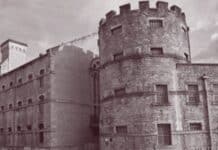
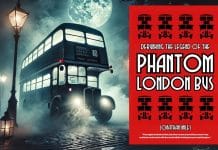
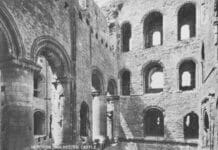
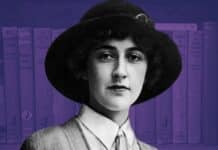
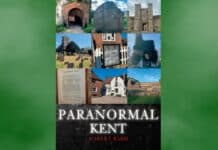

this is really helped on my school project